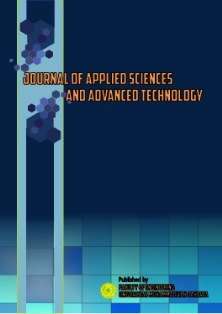Mobile-Based Employee Attendance System Design Using the Rapid Application Development Method at the Universitas Muhammadiyah Jakarta
DOI:
https://doi.org/10.24853/jasat.4.3.81-86Kata Kunci:
Employee attendance GPS Fingerprint Mobile Rapid Application DevelopmentAbstrak
Employee attendance is an important activity because it is related to employee productivity and is usually used as part of paying employee salaries. Therefore, recording employee attendance must be thorough, fast and accurate. Now, various types of employee attendance systems have developed, one of which uses fingerprints. The employee attendance system currently used by the University of Muhammadiyah Jakarta is attendance using fingerprints placed in every building or faculty. This system has drawbacks, namely the limited availability of fingerprint scanners, placement of presence tools far from the work location, and dependence on presence tools. So with these weaknesses, a mobile apps-based attendance system was built that uses GPS to make it easier for employees to make attendance while in the presence area or where they work. The method used in this research is Rapid Application Development. With this system, the attendance process and attendance data processing is easier and more efficient, helping to maximize the attendance data collection and processing process.Unduhan
Referensi
Aprianti, W. & Maliha, U., 2016. Sistem Informasi Kepadatan Penduduk Kelurahan atau Desa Studi Kasus pada Kecamatan Bati-Bati Kabupaten Tanah Laut. Jurnal Sains dan Informatika, 2(1), pp. 21-28
Cosmas Eko Suharyanto, Dkk. 2017. Perancangan Sistem Informasi Penggajian Terintegrasi Berbasis Web (Studi Kasus di Rumah Sakit St. Elisabeth), Jurnal Teknologi & Sistem Informasi, Vol. 3 No. 2.
Djahir, Yulia dan Dewi Pratita, Bahan Ajar Sistem Informasi Manajemen, CV Budi Utama, Yogyakarta, 2015.
Dona Safitri, 2015, Aplikasi Sistem Informasi Akademik Berbasis mobile android pada SMK NEGRI 5 Pangkalpinang.
Engel, M. M (2018). Pengembangan Sistem Presensi Pegawai Berbasis Android Menggunakan Teknologi Near Field Communication, JUTEI, April 2018, ISSN: 2579-5538, Vol 2, No.1.
Febrian, V., Ramadhan, M. R., Faisal, M., & Saifudin, A. (2020). Pengujian pada Aplikasi Penggajian Pegawai dengan menggunakan Metode Blackbox. Jurnal Informatika Universitas Pamulang, 5(1). From http://www.openjournal.unpam.ac.id/index.php/informatika/article/view/4340
Frieyadie. (2015). Menurut Frieyadie dalam (Mulia Rahayu, 2015:162) "LRS merupakan hasil pemodelan Entity Relational Ship (ER) beserta atributnya sehingga bisa terlihat hubungan-hubungan antar entitas”. 2015.
Hermanto, N. Nurfaizah & Riyanto, N.R.D. (2019). Aplikasi Sistem Presensi Mahasiswa Berbasis Android, Jurnal Simetris, April 2019, ISSN: 2252-4983, Vol 10, No.1.
Juansyah, A. (2015). Pembangunan aplikasi child tracker berbasis assisted-global positioning system (a-gps) dengan platform android. Jurnal Ilmiah Komputer dan Informatika (KOMPUTA), 1(1), 1-8.
Jubilee, Enterprise. (2019). Lancar JAVA dan Javascript. Yogyakarta: Elex Media Komputindo.
Juhara, Zamrony P. 2016. Panduan Lengkap Pemrograman Adnroid. Yogyakarta: Penerbit Andi.
N. Safaat. Android: Pemograman Aplikasi Mobile Smartphone Dan Tablet PC Brebasis Android. Bandung: Informatika, 2015.
Priyambodo, A., Usman, K., Novamizanti, L. (2020). Implementasi Qr Code Berbasis Android Pada Sistem Presensi, JTIIK, Oktober 2020, ISSN: 2355-7699, Vol 7, No.5.
R. H. D. Putra, "Penerapan Metode Haversine Formula Pada Sistem Informasi Geografis Pengukuran Luas Tanah," Jurnal Sistem dan Teknologi Informasi, 2015.
Rosa A. S, dan M. Shalahuddin. (2013). Rekayasa Perangkat Lunak. Bandung: Informatika Bandung.
Siagian, L. J. (2018). Otomatisasi Pengujian Perangkat Lunak: Software Test Automation.Yogyakarta: deepublish.
S. K. White, What is geofencing? Putting location to work, CIO, 2017.
Soedaryono, Tata Laksana Kantor, Penerbit Usaha Nasional, Surabaya, 2003, Hlm. 27
Supriyatna, A. (2018). Sistem Informasi Forum Diskusi Programmer Berbasis Web Menggunakan Rapid Application Development. 7(November), 138–147.
##submission.downloads##
Diterbitkan
Terbitan
Bagian
Lisensi
COPYRIGHT POLICY
The author(s) of an article published in the Journal of Applied Sciences and Advanced Technology (JASAT) retains ownership of the intellectual property rights in work (s).
PUBLISHING RIGHTS
The author(s) of an article published in the Journal of Applied Sciences and Advanced Technology (JASAT) have unrestricted publication rights. The authors give the Journal of Applied Sciences and Advanced Technology (JASAT) the right to publish the article and designate the Faculty of Engineering Universitas Muhammadiyah Jakarta Publishing as the original publisher of the article.
LICENSING POLICY
JASAT is an open-access journal that follows the Creative Commons Non-Commercial 4.0 International License (CC BY-NC 4.0), which states that:

Under this license, the reusers must give appropriate credit, provide a link to the license, and indicate if changes were made. Users may do so in any reasonable manner, but not in any way that suggests the licensor endorses users or their use.
Please take the time to read the whole license agreement (https://creativecommons.org/licenses/by-nc/4.0/). As long as reusers follow the license conditions, the owner cannot withdraw these freedoms. The following components are included under this license:
 Attribution: Users must provide appropriate attribution, including a link to the license, and indicate whether or not they made any modifications. Users are free to do so reasonably, but not in a manner that indicates the licensee approves of their usage.
Attribution: Users must provide appropriate attribution, including a link to the license, and indicate whether or not they made any modifications. Users are free to do so reasonably, but not in a manner that indicates the licensee approves of their usage.
 NonCommercial: Users may not use the material for commercial purposes.
NonCommercial: Users may not use the material for commercial purposes.












_2.png)


1.png)

2.png)
